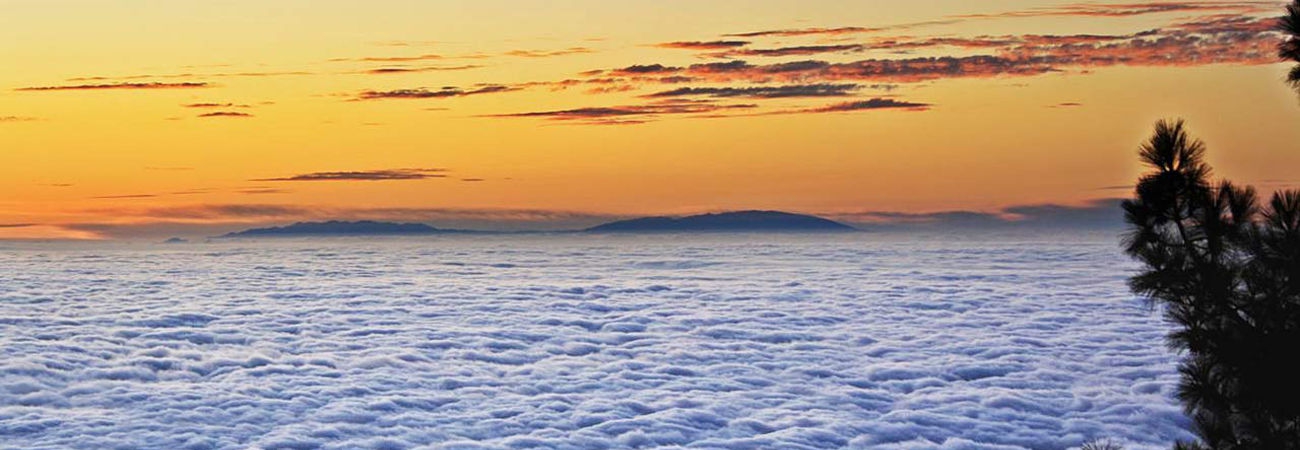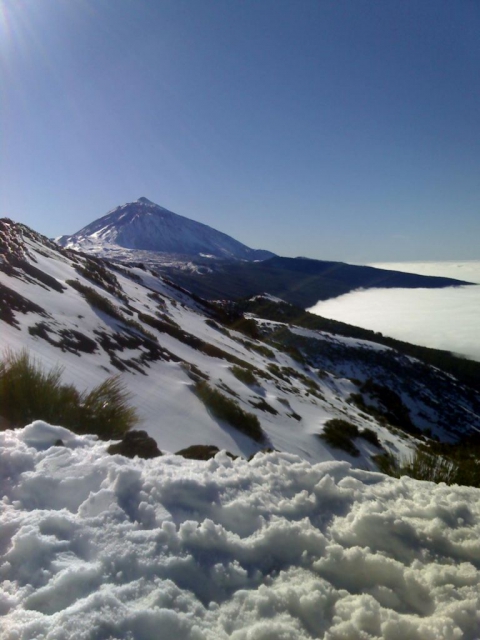Contrasts
There are also many other contrasts in climate to be seen. Santa Cruz de Tenerife usually enjoys warm weather all year round. If you travel from Santa Cruz to the centre of La Laguna - the university city of Tenerife - in winter, you would be wise to take some light but warm clothing with you because temperatures can drop sharply in just a dozen kilometres and you may even find it is raining.Contrasts
The greatest contrast occurs during the winter, when you can sunbathe on almost any beach in Tenerife, whilst resting your gaze on the snow-capped peak of Mount Teide, just a few kilometres away. It snows quite hard every year in Las Cañadas and the surrounding area - about two thousand metres above sea level.
The North and the South
The North and the South of the Island also have different climatic conditions. There are more hours of sun all year in the South and more rainfall and higher humidity in the North, which explains the different landscapes and tones of the countryside, although both climates can be considered ideal within the mild and moderate climate we have already mentioned. In fact, 19th century doctors - English and Dutch mainly - recommended the North of Tenerife as the ideal natural cure for several diseases related to the ravages of age and circulation problems. In short, the high temperatures one would expect in Tenerife from its proximity to the Tropic of Cancer and the Sahara Dessert, are softened by the influence of the sea and the cold Canary current. On the other hand, the altitude of the island causes a marked variation in temperature with altitude.








